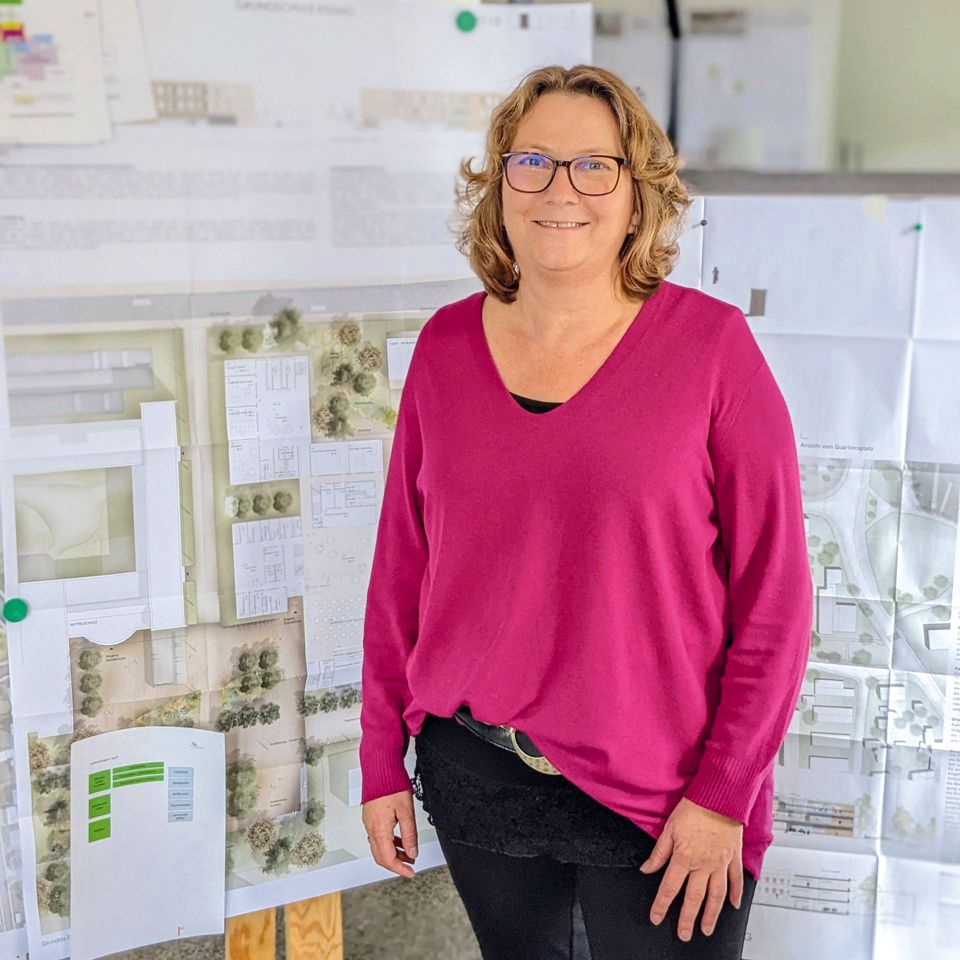How do we create spaces that encourage learning?
Karin Doberer and her consultancy firm LernLandSchaft support companies in developing and planning innovative spatial concepts for ‘new learning’.


Karin Doberer and her consultancy firm LernLandSchaft support companies in developing and planning innovative spatial concepts for ‘new learning’.
Who hasn't experienced this?
Tables set up in a large U-shape, rigid chairs behind them, and the presentation media at the front of the room. Many seminar rooms in companies and educational centres still look like this – even though the talk has long been of new learning and lifelong learning up and down the country.
But something is changing!
More and more people are asking themselves: How can I make a meaningful and self-determined contribution in my working environment? This has an impact on their expectations of their employer, their workplace and their team. They also expect an environment and atmosphere at work that takes their needs seriously and, above all, allows them to develop personally. New ways of working without opportunities for lifelong learning? No longer imaginable for them!
Companies are also increasingly thinking about learning – and not just to train employees. They also see it as a way of expressing appreciation in the sense of: I believe in you. I am giving you space to further qualify yourself as a person and as a valuable employee for me. New learning as a reward and an instrument of employee retention. This works because people inherently want to learn. The urge to learn is innate in us. There is no such thing as a lack of desire to learn. It is the framework conditions that make learning more difficult or easier. A room can achieve incredible things here. But to do that, we have to rethink it.
A learning room must signal to everyone who enters it: ‘You are important here, with your needs and your expectations. That's why your learning will be successful in the end.’ Incidentally, this applies to learners as well as teachers!
A room like the one described at the beginning – inflexibly designed for teacher-centred teaching – sends a completely different message: ‘You are the ignorant ones. And now you will be told what's what by someone who knows. How you feel and what you retain is your business.’ With the best will in the world, such an environment makes it difficult to learn in a committed and fatigue-free way, let alone in an inspired way.
When we plan learning environments in the context of working environments, we must therefore always ask ourselves: What does work need, what does learning need and what do people need? These aspects cannot be separated from one another. That is why we talk about work-learn blending.
“Purely functional spaces suppress the development of creativity and cooperation.“
What does that look like in practice?
It starts with the arrival. A welcoming learning environment adapts to people with their different expectations. There are the curious, the anxious, and the hyperactive. There are those who have just arrived, looking for a place for their suitcase, and those who already feel at home. For the arrival, you need an area that welcomes and guides everyone. In the entrance area, visitors can immediately see where they need to go. They find space for luggage and coats. The layout continues to be logical, allowing for intuitive navigation.
Traditional classrooms and formal, efficiency-oriented learning environments are no longer sufficient to meet the dynamic learning needs of employees in a digitally connected, globalized world.
Purely functional spaces suppress creativity and cooperation because they fail to meet people’s need for an engaging cultural environment. People increasingly want a learning and working environment where they feel comfortable, that addresses them as multidimensional beings with body, mind, and spirit, and fosters their development.
Modern learning spaces should therefore be adaptable, technology-supported, and aesthetically appealing. They should offer diverse opportunities for informal learning, collaborative work, and self-directed practice. And they must promote interaction with others. This means we need not only physical spaces, but also virtual learning platforms and digital tools that provide access to knowledge and resources anytime and anywhere, enabling hybrid formats. We also need spaces for interaction, meaning-making, and value orientation.
Every room should signal: I am well-suited for this or that learning format, but I can also support other activities. This requires flexibility. Take, for example, a room designed for input. Input is often understood as one person standing at the front while others listen. However, input also means setting impulses. These impulses have an effect. They stimulate the listeners to engage—and soon, they are organizing themselves to take the next learning step. The room must be flexible to accommodate different forms of organization.
“Every room in which learning can take place needs a basic script.”
Flexibility doesn’t mean randomness!
Successful flexibility requires structured organization. It's not enough to simply put tables and chairs with wheels in a room. That quickly leads to chaos and arbitrariness—the room conveys no message and cannot initiate learning processes. People understand a well-organized and flexible space. They can decide for themselves what they need to do there, whether it's to focus and absorb content or to move on to the next learning or work step. The room offers them the opportunity to do so.
What also doesn't work is multifunctionality. There is no one-size-fits-all solution. Every room where learning takes place needs a basic script. The key to designing learning spaces, centers, academies, including hybrid learning environments, is: What is the goal? What outcome should employees achieve when they leave this environment? And, importantly, how can this result be tangible for each individual?
I’m convinced that if this is achieved, it will be a quantum leap for business and industry.

Spread the word – arouse interest
Share this page and arouse interest in others.